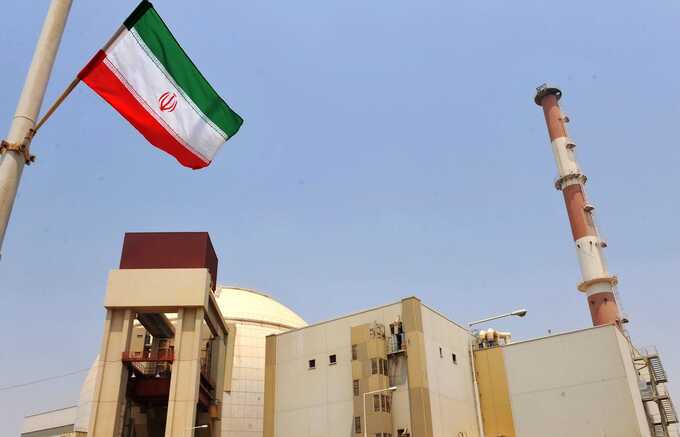Will Israel strike Iran’s nuclear sites? The unexploded bomb effect
A potential Israeli strike on Iran’s nuclear facilities is back on the agenda after the weakening of several key Iranian proxies — Hezbollah, Hamas, and the fallen Syrian regime, writes military expert David Gendelman.
This is reported by The Insider.
With these allies diminished, Iran will have even more incentive to accelerate its nuclear program. For Israel, preventing the ayatollahs from obtaining a bomb remains a top priority. However, targeting Iran’s nuclear sites presents a formidable challenge. The program consists of a vast network of heavily fortified underground facilities spread across the country. A successful strike would require a massive air operation and possibly a ground offensive deep inside enemy territory — one that would likely trigger an Iranian missile response. The final decision on whether to authorize the destruction of Iran’s nuclear infrastructure will likely rest with Donald Trump.
Iranian-Israeli relations were not always hostile — under the Shah, the two countries even enjoyed a partnership. However, the current Iranian leadership rejects Israel’s right to exist. In Tehran’s view, a Jewish state in the region is unacceptable, immoral, and fundamentally incompatible with its core principles. Iran’s leaders have repeatedly and officially declared the destruction of Israel as their goal, even installing a countdown clock in a Tehran square marking the time until 2040, when they believe this “joyous event” will take place. Meanwhile, in its pursuit of regional dominance, Tehran has spent the past forty years waging war against Israel — primarily through its network of proxies.
Given these ambitions, Israel sees Iran’s nuclear program as an existential threat. This is not a North Korean or even a Pakistani bomb — it falls in the same category as the Iraqi and Syrian nuclear projects, which Israel has historically acted against. For over two decades, the Israeli government has classified Iran’s nuclear ambitions as a strategic danger.
As with any nuclear weapon, the primary threat lies in its very existence. Even if it remains unlikely that Iran would launch a strike immediately upon acquiring a bomb, mere possession would elevate the country’s status, dramatically shifting the regional balance of power in its favor.
Weaker proxies change the equation
For years, Israel has worked to disrupt, delay, and dismantle Iran’s nuclear program through all possible means — political, economic, intelligence, sabotage, and military. This effort has included coordination with the U.S. and other Western countries to pressure the Iranian leadership and to impose sanctions. It has also involved cyberattacks, the assassination of key Iranian nuclear scientists, and sabotage at nuclear sites and to equipment supplied for the program.
For years, Israel has worked to disrupt, delay, and dismantle Iran’s nuclear program through all possible means
At the same time, Israel has been preparing for a military operation. On three separate occasions between 2010 and 2012, Israeli leadership came close to launching a strike but ultimately refrained, primarily for political reasons. Operation “King Solomon’s Palace” never took place. Now, military action is back on the table. Over the past year of fighting, Israel has severely weakened Iran’s allies and proxies, including Hamas in Gaza and Hezbollah in Lebanon, while the fall of Assad has stripped pro-Iranian forces of their Syrian foothold. As a result, Iran’s long-standing strategy of waging war through proxies has been significantly undermined.
This raises the question: will Iran respond by accelerating its nuclear program and developing a bomb as a new means of countering Israel, or will its leadership choose to remain a “threshold” state, seeking renewed agreements with the West? In his previous term in the White House, Donald Trump proved to be deeply hostile toward Iran. Will Tehran attempt to wait him out?
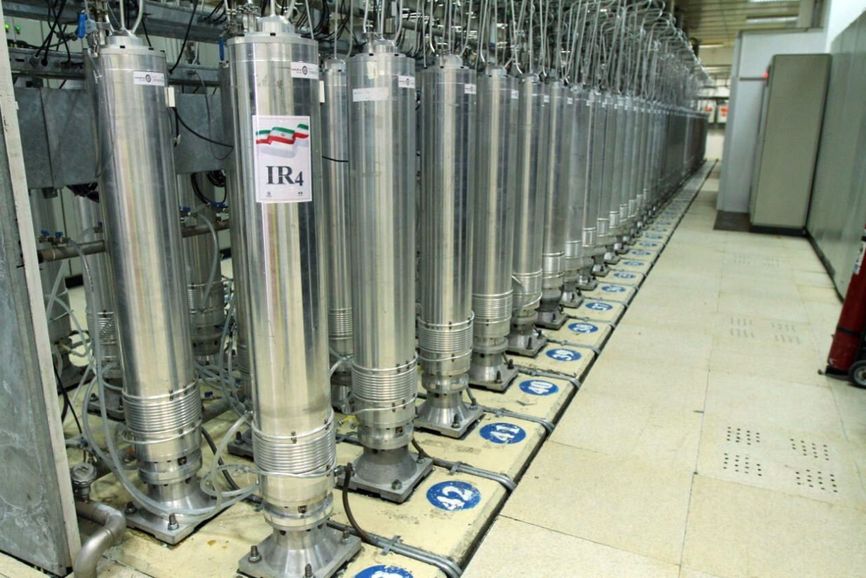
Uranium enrichment centrifuges at the Natanz facility in Iran
Washington, of course, is not the only check on Iranian ambitions. The weakening of Iran’s proxies, particularly Hezbollah, lowers the threshold for Israel to decide on executing a strike on Iran’s nuclear facilities. For years, Iran has prepared Hezbollah — its missile capabilities in particular — as a trump card to be played in response to an Israeli attack. It is no coincidence that for many years, IDF General Staff exercises simulated a war with Hezbollah beginning with an Israeli strike on Iran, followed by Hezbollah launching massive rocket barrages in retaliation. While Hezbollah has not been destroyed, its missile and ground assault capabilities have been significantly weakened by IDF actions and fighting in southern Lebanon.
The weakening of Iranian proxies further reduces the barrier to an Israeli decision to target Iran’s nuclear facilities
Another factor lowering the threshold for Israeli action is the fact that the direct exchange of strikes between Iran and Israel took place in 2024. For decades, avoiding a direct military confrontation with Iran was a key reason why the Israeli government repeatedly opted for sabotage and intelligence operations instead of full-scale military action. (The main political obstacle had been U.S. opposition to such an operation.) But given that direct clashes with Iran are already underway — and now that Hezbollah has been seriously weakened — the military equation has changed.
Air operation
A successful military strike on Iran’s nuclear program is exponentially more complex than the past Israeli attacks on Iraq or Syria. In those cases, a single above-ground facility had to be destroyed. In Iran, the nuclear program consists of an extensive network of sites spread across the country, with around twenty publicly known locations. Some of these targets are deeply buried and fortified to a degree that makes their destruction physically challenging — even before factoring in the need to penetrate air defenses, operate at a range of approximately 2,000 kilometers, and address other military concerns. Anyone with even a passing interest in the subject has heard of Fordow, Natanz, Arak, Parchin, and other facilities. Maps of their locations are readily available online.
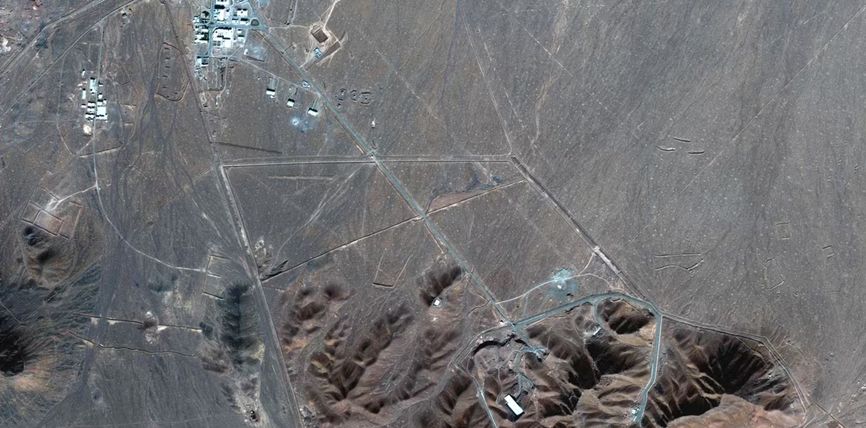
Uranium enrichment facility in Fordow, Iran, November 2020
Every underground facility has weak points — among them entrances and exits, communications, ventilation, and power supply — and targeting these vulnerabilities can incapacitate the site. However, sometimes direct physical destruction is also required. There are methods for achieving this, from various bunker-busting bombs to «bullet-for-bullet» techniques and other strategies.
Israel has spent many years developing options and preparing the necessary forces and resources. Since 2012, when Israel abandoned previous military operation plans, the level of protection for Iranian sites has increased exponentially. However, Israeli security forces have also made significant progress, even if the work has proceeded in waves rather than continuously. After all, the preparation for such a strike — which involves gathering intelligence, preparing for electronic warfare, organizing logistics, and establishing other capabilities — costs billions of dollars.
The preparation of strikes, intelligence, electronic warfare, logistics, and other capabilities for an operation against Iran costs billions of dollars
Regarding the required forces and resources, during Operation «Days of Repentance» on Oct. 26, 2024, the Israeli Air Force deployed over 100 aircraft in Iran. For an operation targeting nuclear facilities, this can be considered the lower-end threshold, with the exact numbers of F-35I, F-16I, F-15I, and other combat aircraft participating being a military secret. In addition to these, there are also refueling aircraft, reconnaissance planes, electronic warfare units, command, targeting, search and rescue teams, and strike and reconnaissance UAVs. All together, this forms an entire armada, with various waves covering security, suppression of enemy air defenses, radar, communications, and command systems, as well as strikes on the nuclear sites themselves.
In addition to numerous exercises and combat sorties in similar long-range configurations, these scenarios were also practiced during several Israeli Air Force airstrikes on Yemen. The corresponding stock of munitions for such an operation is kept in reserve as untouchable. Furthermore, Trump lifted the ammunition supply restrictions imposed by Biden, and Israel hopes not only for an increase in the quantity of munitions, but also for the expansion of their range.
Ground forces preparation
A separate aspect is the ground operations. The Israeli Air Force’s special forces “Shaldag” operation in September 2024 at a subterranean missile facility in the Syrian city of Masyaf, which had been considered an «invulnerable target» for an airstrike, offers some insight into what may be planned for Iranian underground sites. Although the distance from Israel to the sites in Iran is much greater than the 200 km between the border and Masyaf, the operation will proceed if necessary.
In 2007, while preparing to destroy the Syrian reactor in Deir ez-Zor, located 500 km from Israel, a ground operation involving a special forces demolition was practiced, but in the end, an airstrike option was chosen. Overall, Israel’s special forces have a long history of operations at distant targets — such as in Uganda, Tunisia, Sudan, Egypt, Syria, and many other locations, although their task did not typically involve destroying a fortified site.
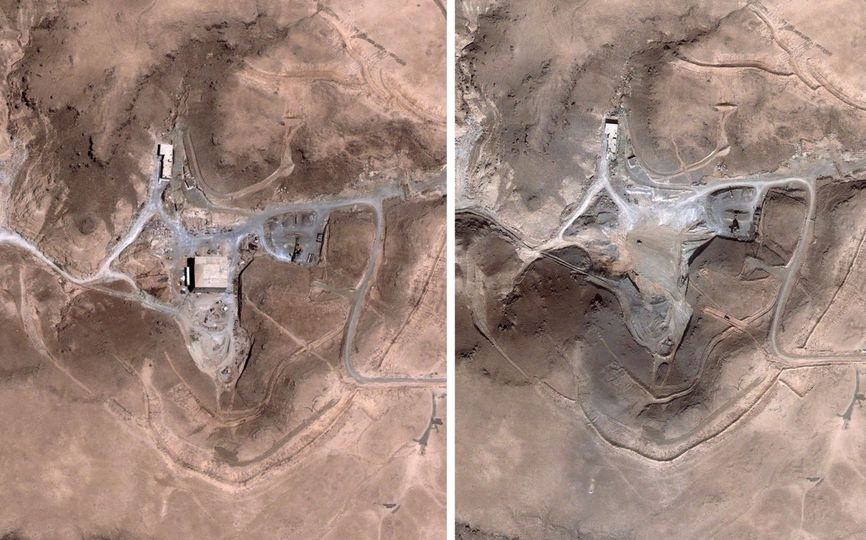
Nuclear facility in Deir ez-Zor, Syria, before (left) and after (right) the Israeli strike
In addition to Israeli special forces and agents, intelligence services and local operatives in Iran can also carry out sabotage, and even combat operations, using various means — both ground and airborne. The periodic mysterious explosions at various military sites in Iran, the assassination of nuclear scientists, the 2018 Mossad operation to seize Iran’s nuclear program archive, and the July 2024 assassination of Hamas political bureau head Ismail Haniyeh at a guarded IRGC facility in Tehran give some indication as to the potential level of infiltration.
For such a strategic task as destroying Iran’s nuclear facilities, if that decision is made, Israel will employ every possible and impossible asset from its arsenal — in space, in the air, on land, on water, underwater, in cyberspace, in the electromagnetic spectrum, and perhaps even in the afterlife. The example of the pagers in Lebanon showed that the methods could be completely unexpected. Determining whether such dramatic surprises are in preparation for Iran remains a headache for the leadership in Tehran.
Coordination with the U.S.
In addition to its own regular training, the IDF has frequently conducted joint exercises with the U.S. Armed Forces for operations targeting Iran. One notable example is the large-scale Juniper Oak drills held in January 2023 and involving 12 ships, including the USS George H. W. Bush (CVN-77) aircraft carrier along with 142 Israeli and American aircraft. These exercises focused on air refueling, breaching layered air defense systems, striking ground, sea, and air targets, conducting search-and-rescue operations, electronic warfare, intelligence gathering, and target designation, refueling Israeli ships and planes from U.S. tankers, ground maneuvering and fire support elements, management and control procedures, and, perhaps most importantly, conducting missile and airstrikes against deeply fortified underground targets at long range. The identity of these long-range fortified underground targets, of particular interest to Israel, is not hard to infer.
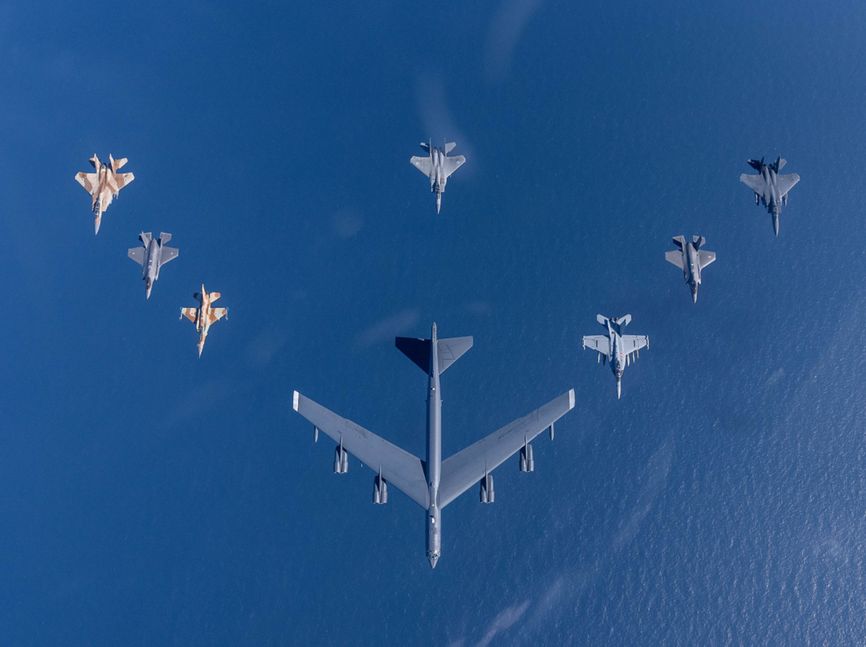
Joint U.S.-Israel exercise Juniper Oak 2023, January 2023
The coordination between the IDF and the U.S. Central Command has significantly increased over the past year of war. The Americans have assisted Israel in repelling Iranian and Yemeni strikes, and this increased cooperation will provide additional benefits in the event of any joint U.S.-Israel operations, including those against Iran.
Of course, if President Trump were to decide to strike Iran’s nuclear facilities himself, U.S. military power could resolve the issue all on its own. On the other hand, if Trump concludes that neither a U.S. nor an Israeli strike on Iran’s nuclear facilities is advantageous at this moment — if, for example, he instead favors using economic sanctions, or even pursuing a deal with Iran — the American president would hold considerable leverage over the Israeli government.
The Iranian issue as a whole
Even a successful operation against Iran’s nuclear facilities will not fully resolve the Iranian problem, especially considering that the facilities can be repaired or rebuilt. Only a change of regime in Tehran could alter the situation.
Even a successful operation against Iran’s nuclear facilities will not fully resolve the Iranian problem
While the production of Iran’s ballistic missiles was partially disrupted by the Israeli airstrike on Oct. 26, 2024, the existing stockpiles still allow for continued missile strikes on Israel on at least the scale seen in April and October 2024. This is also factored into the planning. First, Israel must strengthen its missile defense, primarily by increasing the number of interceptors for the Arrow-2 and Arrow-3 systems and by continuing its cooperation with the Americans, particularly with regard to the deployment of the THAAD system in Israel and of U.S. Navy ship-based systems. Second, Israel must strengthen its offensive capacity for further strikes on Iran’s missile and drone capabilities, which also divert Iranian strike forces and resources away from nuclear facilities.
After such an operation, Israel will need continued American political, military, and financial support, especially considering the anticipated escalation of the war with Iran and its remaining allies. Therefore, coordinating the operation with the U.S. would be highly desirable, if possible.
Such a bold move, without considering the American position, requires extraordinary political resolve —much like that demonstrated by Menachem Begin in 1981 when he ordered the attack on the Iraqi reactor without prior notification to the U.S. In response, the Reagan administration voted for an anti-Israel resolution at the UN Security Council, delayed arms shipments to Israel, and made its displeasure clear in various other ways. In 2007, Ehud Olmert shared Israeli intelligence on the Syrian reactor with President Bush and suggested that the U.S. take action to destroy it. Bush initially opposed both an American and an Israeli strike, but ultimately agreed to the Israeli operation, resolving the issue.
During the Obama administration, Benjamin Netanyahu refrained from acting against the U.S. stance, particularly as internal opposition from Israeli military leaders, including IDF Chief of Staff Gabi Ashkenazi, IDF Chief of Staff Benny Gantz, and Mossad Directors Meir Dagan and Tamir Pardo, emerged against an operation in Iran. Under the Trump administration, if the president opposes Israeli action, Netanyahu would face even greater difficulty in taking kinetic steps.
Ideally, securing a green light from the U.S. would be the best course of action. While Israel has been preparing for a strike on Iran’s nuclear facilities, the decision to carry out such an attack is, like much else in the world today, largely dependent on one man: Donald Trump.
Read more similar news:
Comments:
comments powered by Disqus

















